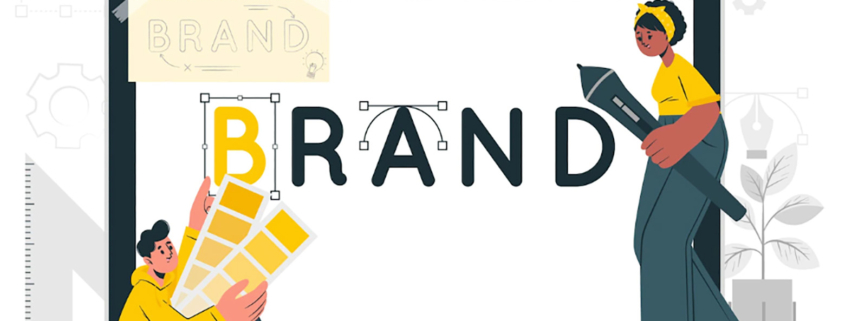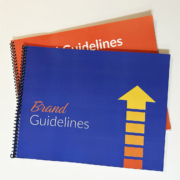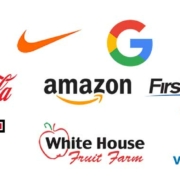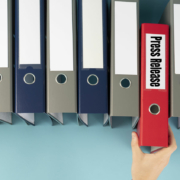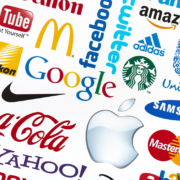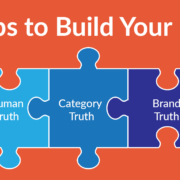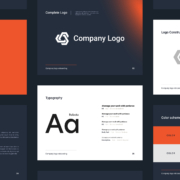7 Tips For Building Your Brand Identity
So you’re looking for where to start building your brand. Let us help give you a leg up.
When building a personal or business brand, the first step for entrepreneurs is to define your identity. You need to identify what makes your brand unique, what it stands for and how it will be perceived by others. Your branding efforts should be steered by brand guidelines (overall actions) that help you understand where your brand is today and where you want it to be tomorrow.
Once you’ve created this plan and established a foundation of who you are as a brand, you can continue building your brand upon that foundation by developing the fun stuff: logos, fonts and colors.
What’s in a (Brand) Name?
Your brand name is more than a label or sweet design. It’s a major part of your brand’s identity – it’s your promise to customers, employees and investors. No pressure, right?
A great brand creates value for all its stakeholders by delivering on this promise of being unique and different from other products or services in the same space. The most effective brands are able to communicate this promise clearly through their marketing efforts.
Know who your target audience is. What’s your brand’s personality? Your brand name could be slapped everywhere: from LinkedIn to your website to program booklets. Your brand name isn’t a temporary thing (at least we hope).
Build an Online Presence That Resonates With Your Target Audience
You can build your brand identity on social networks by creating content that resonates with your target audience and engaging with them. By sharing content that’s relevant and interesting to your audience, you’re more likely to build relationships with them. These relationships will help you promote your business by building trust and credibility in their eyes.
Social media is a great way for small businesses owners to engage with potential customers. If they see something of interest on one of the platforms they follow you on, they might click through or check out another channel where they can learn more about what makes up your company culture.
Create some great content marketing plans around your brand’s history and purpose, or brand story. Sprinkle in some authentic content to give potential customers an idea of what you are about. You’re your biggest cheerleader starting out.
If someone likes what they find on your socials and site (and they will if you listen to us), this spreads brand awareness – all without having anyone pay for advertising space or other marketing tactics like flyers or posters. That’s a win for getting your business name out there.
Branding Starts With Research
If we’ve said it once, we’ve said it a million times: Before you can build a brand, you need to know who your audience is and where they’re located. If you don’t know these things, how will you be able to build a brand identity that attracts them?
To learn about your target audience:
- Research competitors and analyze what they do well and ways they suck. What are the qualities of their brands? What is their tone of voice? What is their brand positioning against other brands in the market?
- Study the industry as a whole — what trends are happening right now? Which demographics are other successful brands in your field marketing toward? Are there any commonalities among their messages that might be useful for identifying why someone would buy from them instead of another company?
As you compile your data, the information will help you craft your brand message. Your research will also help build a mission statement.
Create a Logo That Supports Your Brand Identity
When you hear the words Apple, Amazon, Starbucks and McDonald’s, what do you mentally picture? The logos.
Whether you’re a startup or you’re established and rebranding, a logo is the first impression people will have of your company. It should be memorable, relevant and consistent. A good logo will help build trust in your brand identity. It’s important that your logo is simple, scalable and flexible so it can be applied across different media like print, digital screens or even physical products such as clothing or packaging.
A strong brand identity can create a long-lasting relationship between customers and brands they love. If someone sees your brand with a memorable logo they’ll associate that image with all the positive feelings they get from interacting with your business or product.
Consider Your Brand’s Color Palette and Typography Options
Now that you’re ready to take the plunge into branding yourself, it’s time to consider some of the finer details. Whether you’re developing a podcast or gearing up for ecommerce, you want your brand out there. There’s meaning behind everything when it comes to the visual pieces of your brand. Besides your company name, branding helps differentiation between niche brands.
Colors on your website and logo along with the typography are part of your brand voice. What’s that voice saying to you about your personal brand? There are things to keep in mind.
Colors Draw Attention and Influence
Colors call attention to your own brand logo and font, and drum up emotions which in turn leads itself to the decision-making process. The color scheme you choose will be a reflection of your brand.
First and foremost, you’ll want to choose a color palette that reflects your brand personality. For example, yellow conveys happy feelings, while blue represents a calmer, more professional tone.
Is your brand modern? Traditional? Modern but with a traditional vibe? A good rule of thumb is to start with one or two colors (you can always add more later) and make sure they work well together.
Fonts Also Set a Tone
Next up are typography, or kinds of fonts. Your logo might include words, so choose ones that are easy for people to read — and consistent with the rest of your design aesthetic.
Get creative. Mix fonts in different sizes within one logo or go classic by sticking with one font throughout every element of your branding package. And don’t forget about legibility; if people can’t read what’s written on something it defeats the purpose.
Create a Jazzy Tagline
When you hear “Expect more. Pay less,” what do you think of? A red bull’s eye and spending your whole paycheck at Target. We’re there with you. How about “just do it”? That would be from Nike.
These are examples of catchy taglines, another part of a marketing strategy that helps with brand building. The purpose of taglines is to immediately give people an idea of what your brand is about in just a few words.
Don’t get taglines confused with slogans, which are meant to advertise an item. An effective tagline will act like a song: it’ll get stuck in your potential customers’ heads and they’ll remember your brand when they’re offline.
The Small and Mighty Business Card
Sure, you can use infographics and include email marketing in your planning, but sometimes having a small card to hand out is worth it.
We’re talking about business cards. They have your name, contact information, logo and social media. Leave them on the community boards at coffee shops. Present one as you wrap up an in-person meeting. Throw one in a fish bowl at the local deli shop for a chance to win free lunch for the office.
Business cards shouldn’t be crowded with information. You want to make people aware of your brand with your name, and ways to contact you. Remember: while no one likes it, you’re being judged on an initial appearance. The more concise business cards are, you can channel people to your new products on digital platforms.
Say Hello to Your Brand Identity
Now that we’ve laid down a foundation of brand building, it’s time to get to work. If you’re wondering where to begin, contact Lift Marketing to walk you through the process. We know the starting points of how to build a brand, and how important it is to reach your target market along the way. We also like when our clients celebrate milestones with digital marketing. So what do you say? Let’s begin building your brand.

